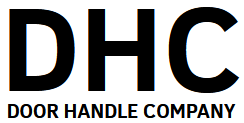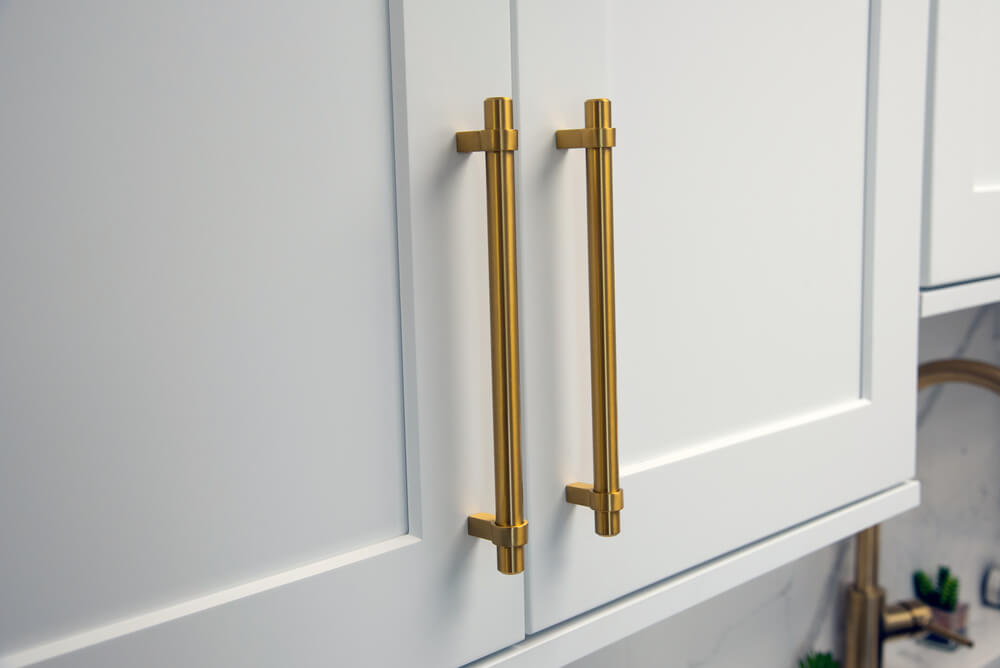Most people don’t think twice about door handles, yet they are one of the most touched and relied upon features in any home. Every time you walk into a room, open the front door or close up for the night, you’re depending on a handle to do its job properly. Because they are so familiar, it is easy to overlook how important they really are.
The choice between internal and external handles might feel like a minor detail, but it has a big impact on your property’s appearance, security and even day-to-day convenience.Selecting the wrong type of handle can create problems. A handle designed for internal use will quickly wear or corrode if fitted on an exterior door, while an overly robust external handle might look out of place on a bedroom door.
The Role of Internal Handles
Internal handles play a different role compared to their external counterparts. Instead of being focused on security, they are designed to enhance comfort, style and everyday usability. Here’s what makes them important:
- Comfort in Daily Use
Internal door handles are used constantly throughout the day, so they need to feel smooth and comfortable in the hand. A poor-quality handle can quickly become frustrating. - Variety of Finishes
From polished chrome and satin nickel to antique brass and matte black, internal handles come in a wide choice of finishes. This allows homeowners to match handles to their décor, whether that’s modern, traditional or rustic. - Style Flexibility
Internal handles provide a chance to introduce character into a room. A sleek lever design can complement a contemporary living space, while a round knob in aged brass can suit a heritage property. - Function Without Security Concerns
Unlike external handles, internal ones do not need to protect against weather or intruders. This means you can focus on aesthetics and functionality, such as privacy locks for bathrooms or simple passage handles for bedrooms. - Consistency Across the Home
Choosing a single style or finish across multiple rooms helps create a cohesive look throughout your property. Matching handles with hinges, light switches and sockets can tie a whole interior scheme together.
Matching Handles to Function
Handles are not one-size-fits-all. Bathrooms often need privacy handles with a locking function, while living rooms and kitchens usually require simple passage handles. For external doors, you should always pair handles with secure locks, such as a mortice or multipoint system. Thinking about how the door is used day-to-day helps narrow down the right type of handle quickly.
Why External Handles Demand More
External door handles are not just decorative fittings, they are a first line of defence and a feature that has to cope with daily use in far tougher conditions than internal handles. Let’s look at the qualities that make them different:
Protection and Security: An external door is the main entry point to your home, so the handle must contribute to overall security. Many external handles are designed to work with strong locking systems such as mortice locks or multipoint locks. This helps protect against forced entry and gives homeowners peace of mind.
Weather Resistance:Unlike internal handles, those fitted to outside doors are exposed to rain, frost, wind and fluctuating temperatures. Materials such as stainless steel, solid brass and specially coated finishes are chosen for their ability to withstand these conditions without rusting or corroding.
Durability Through Daily Use: Front and back doors are opened and closed multiple times every day, often with force, shopping bags in hand or even keys still in the lock. Handles need to be built to withstand this heavy use without loosening, bending or wearing out quickly.
Smart Appearance Despite Exposure: A front door is one of the first things visitors notice about a property, and the handle plays a big part in that impression. External handles are therefore designed not only for strength but also for style, ensuring they look attractive and welcoming even after years of use.
Compatibility with Locks and Latches: Many external handles are manufactured with lock compatibility built in. This means they can pair with cylinder locks, deadbolts or multipoint systems to create a secure and reliable entryway. Matching with letter plates, knockers and hinges ensures both practicality and a coordinated design.
Balance of Style and Strength: While security and durability come first, homeowners do not want to sacrifice style. That’s why external handles are available in a wide variety of finishes – from sleek modern stainless steel to traditional antique brass,so you can protect your home without compromising on design.
Comparison Table: Internal vs External Door Handles
| Feature | Internal Door Handles | External Door Handles |
| Primary Purpose | Style, comfort, everyday usability | Security, durability, weather resistance |
| Security Level | Low, often no lock, or simple privacy function for bathrooms/bedrooms | High, designed to pair with mortice locks, cylinder locks or multipoint systems |
| Material Choice | Wide range (zinc, brass, chrome, nickel, matte black etc.) | Tougher materials (stainless steel, solid brass, corrosion-resistant finishes) |
| Weather Resistance | Not required, designed for indoor use only | Essential, resistant to rain, frost, UV and fluctuating temperatures |
| Durability Needs | Light to medium use, comfort and smooth operation matter most | Heavy daily use: must withstand force, wear and exposure |
| Design Role | Adds character and consistency to interiors; wide stylistic flexibility | First impression of the home; balances style with robust strength |
| Maintenance | Minimal, soft cloth cleaning | Moderate, occasional wipe down, protective finish helps resist tarnishing |
| Best Applications | Bedrooms, bathrooms, kitchens, lounges | Front doors, back doors, patio doors, garage side doors |
Choosing Finishes, Style and Care for Long-Lasting Handles
Finishes That Influence Durability and Design
The finish of a handle shapes both its look and its lifespan. Internal handles do not need to cope with harsh weather, so you can choose from a wide variety of styles without worrying about corrosion. Matte black is a favourite for contemporary homes, while satin brass brings warmth to traditional interiors. External handles, on the other hand, benefit from tougher finishes such as stainless steel or specially coated brass. These materials resist moisture, reduce tarnishing and last longer with minimal upkeep.
Style as a Key Design Element
Door handles are more than practical fittings; they are design details that people notice instantly. Some homeowners prefer to match all internal and external handles for a neat, coordinated appearance. Others like to mix finishes across different doors to add character. Both approaches work well, as long as the style complements the overall look of the property.
Care and Maintenance for Longevity
Internal handles require very little maintenance. A simple wipe with a soft cloth is usually enough to keep them clean. External handles face more challenges, as they are exposed to rain, frost and fluctuating temperatures. Choosing corrosion-resistant finishes helps, but occasional cleaning prevents dirt, water spots and tarnishing from building up. With the right material and a little care, even external handles can remain attractive for many years.
Why the Right Choice Matters
Handles may feel like a finishing touch, but they influence safety, convenience and appearance more than most homeowners realise. Internal handles create a smooth and stylish flow throughout a property, while external handles safeguard the home from the outside world. Getting the choice right ensures durability, enhances the design of the home and adds value in the long run.
Final Thoughts
At Door Handle Company, we believe that the right handle should never be treated as an afterthought. A well-chosen handle is more than just a way to open and close a door – it is an investment in comfort, convenience and everyday use. The right piece of hardware should feel good in the hand, work smoothly and complement the design of the space it sits within.
Handles also play a role in both security and style. A robust external handle strengthens the first line of defence for your home, while an elegant internal handle can lift the look of an entire room. Whether you are renovating a single space or upgrading every door in your property, selecting the right combination of internal and external handles ensures your home feels cohesive, secure and beautifully finished.
FAQS
Are internal handles suitable for external doors?
No, internal handles are not designed to cope with outdoor conditions such as rain, frost or direct sunlight. They also lack the strength and security features needed to protect an external entrance, so they should never be used outside.
Which materials are best for external handles?
Stainless steel and solid brass are excellent choices because they are strong, durable and resistant to corrosion. These materials provide reliable security while maintaining their appearance even in harsh weather.
Do internal handles need locks?
Not always. Internal handles for bedrooms and living rooms usually do not require locks, but bathrooms and private spaces often benefit from handles with an integrated locking function for privacy.
Can I use different finishes for inside and outside?
Yes, many homeowners choose to mix finishes to balance interior design with exterior protection. This allows you to have stylish finishes indoors while using tougher, weather-resistant materials outside.
What is the most popular finish for modern homes?
Matte black and satin nickel are currently two of the most sought-after finishes for contemporary interiors. They offer a clean, modern look and work well with a variety of door styles and décor schemes.

